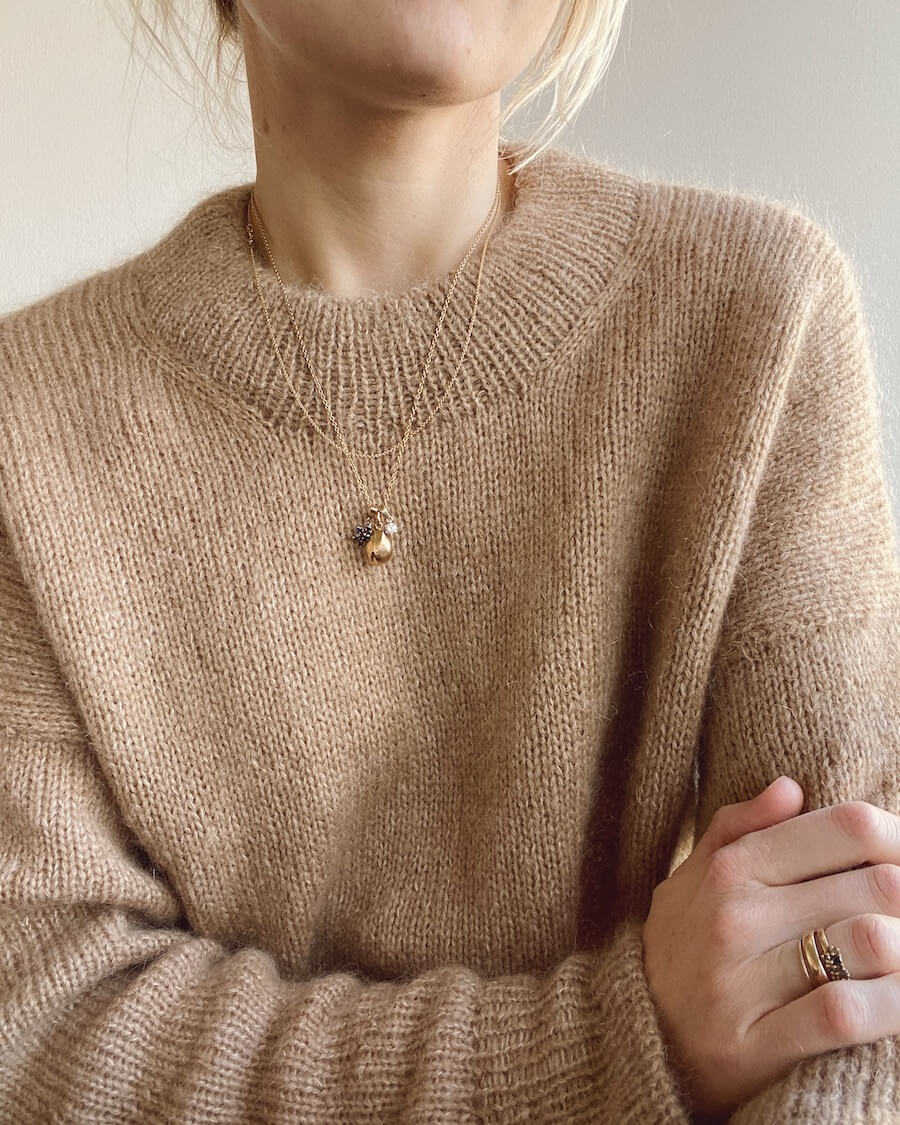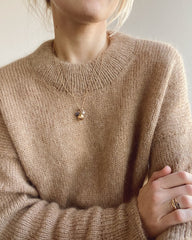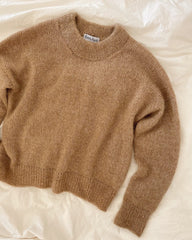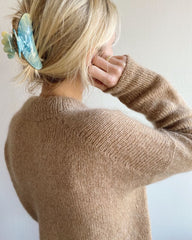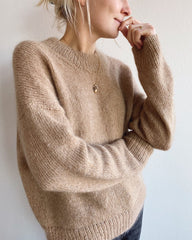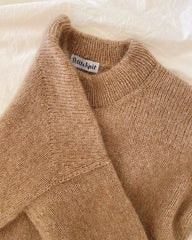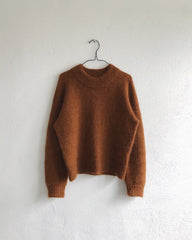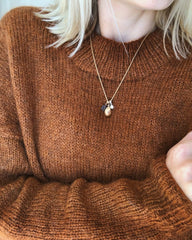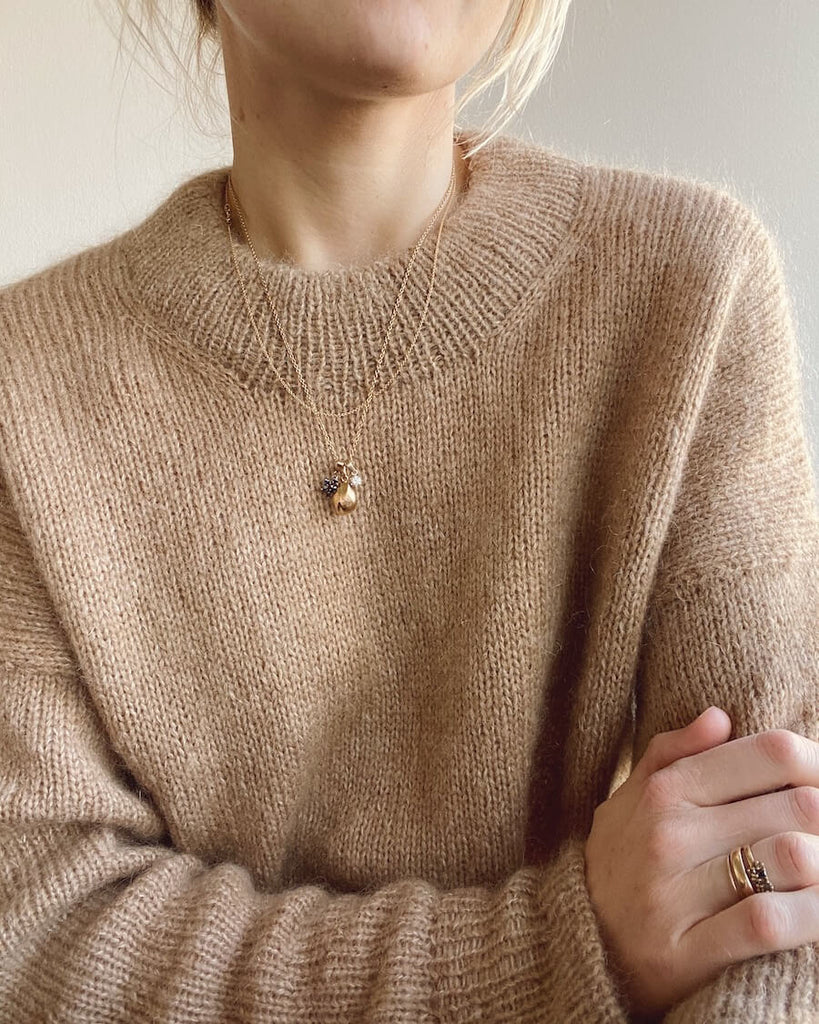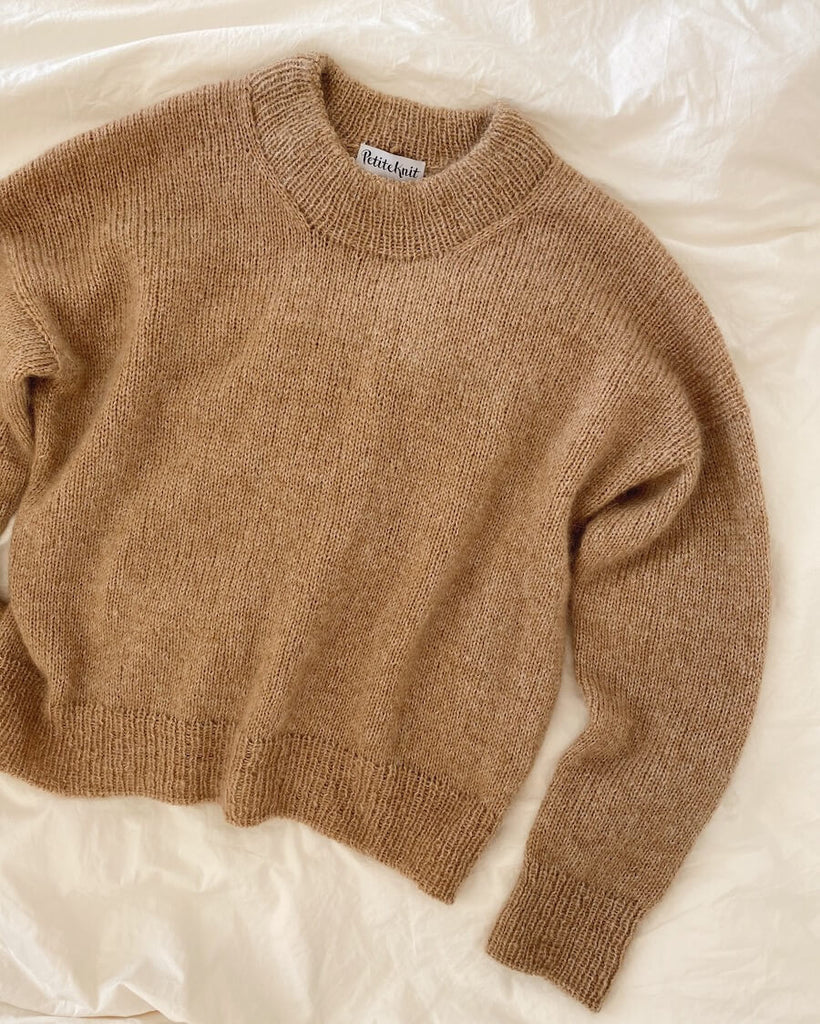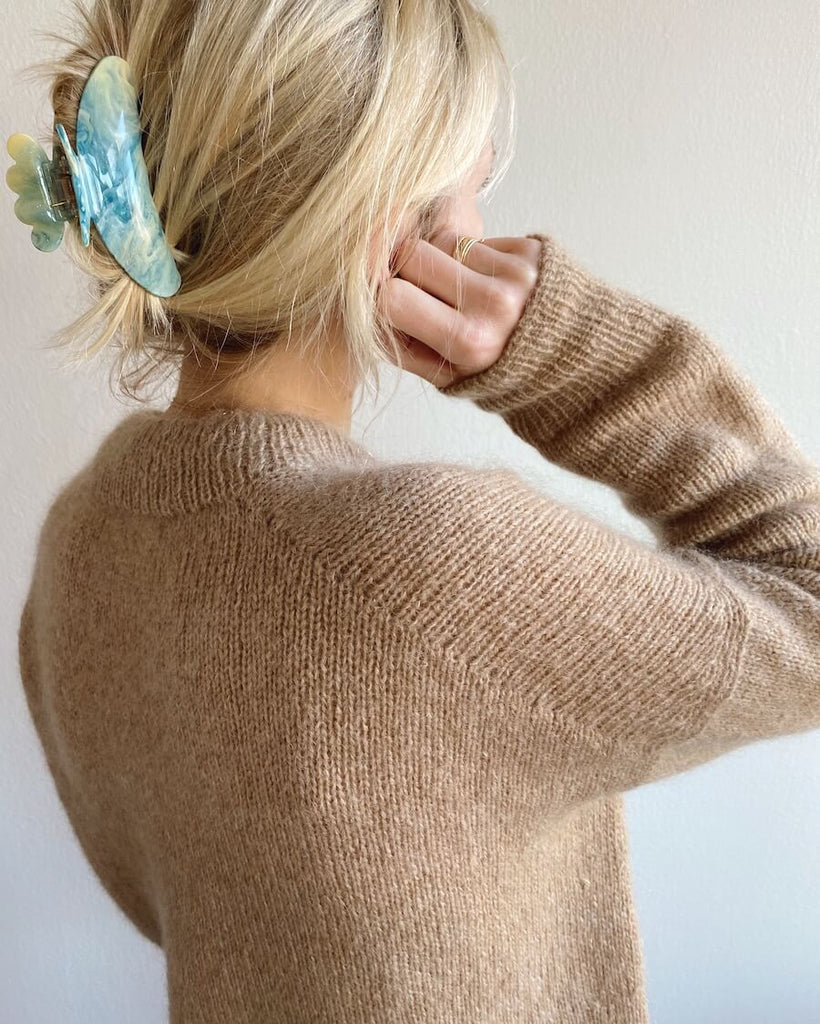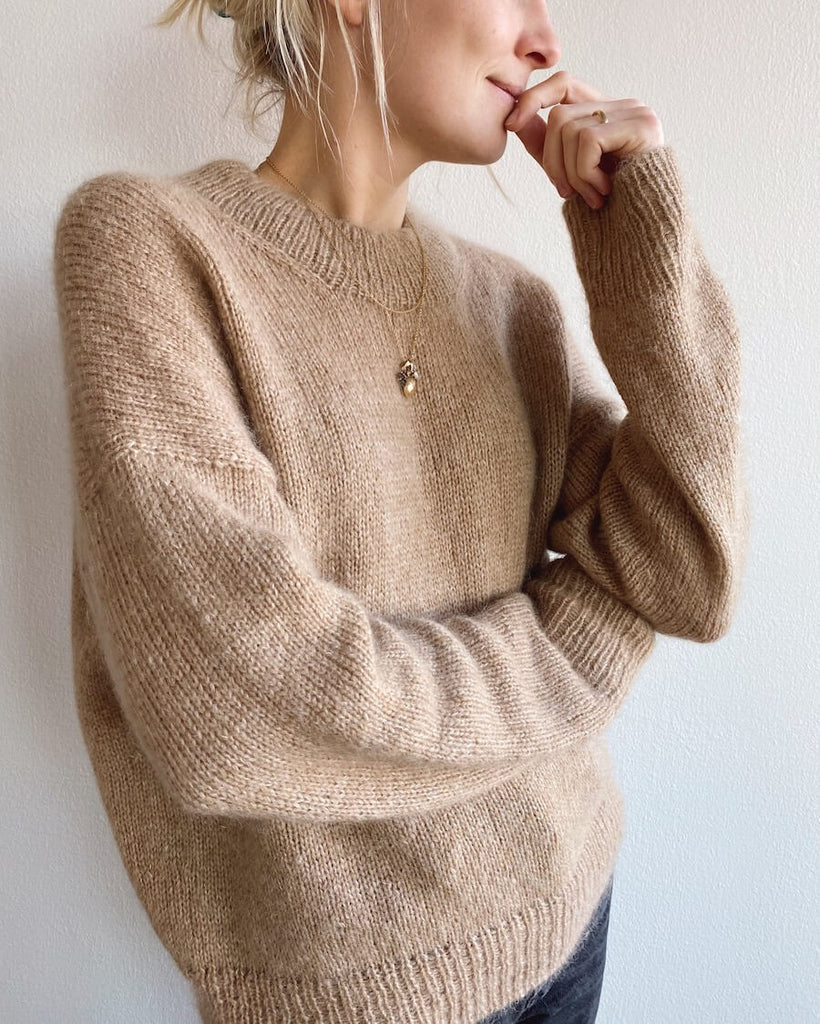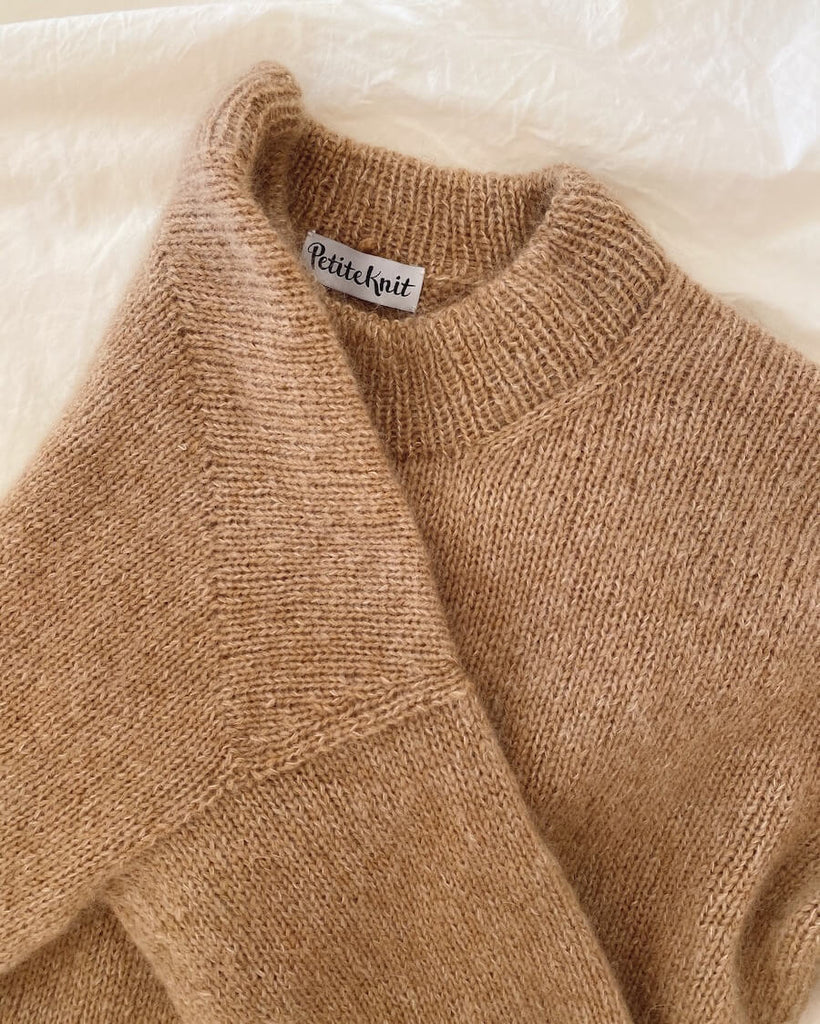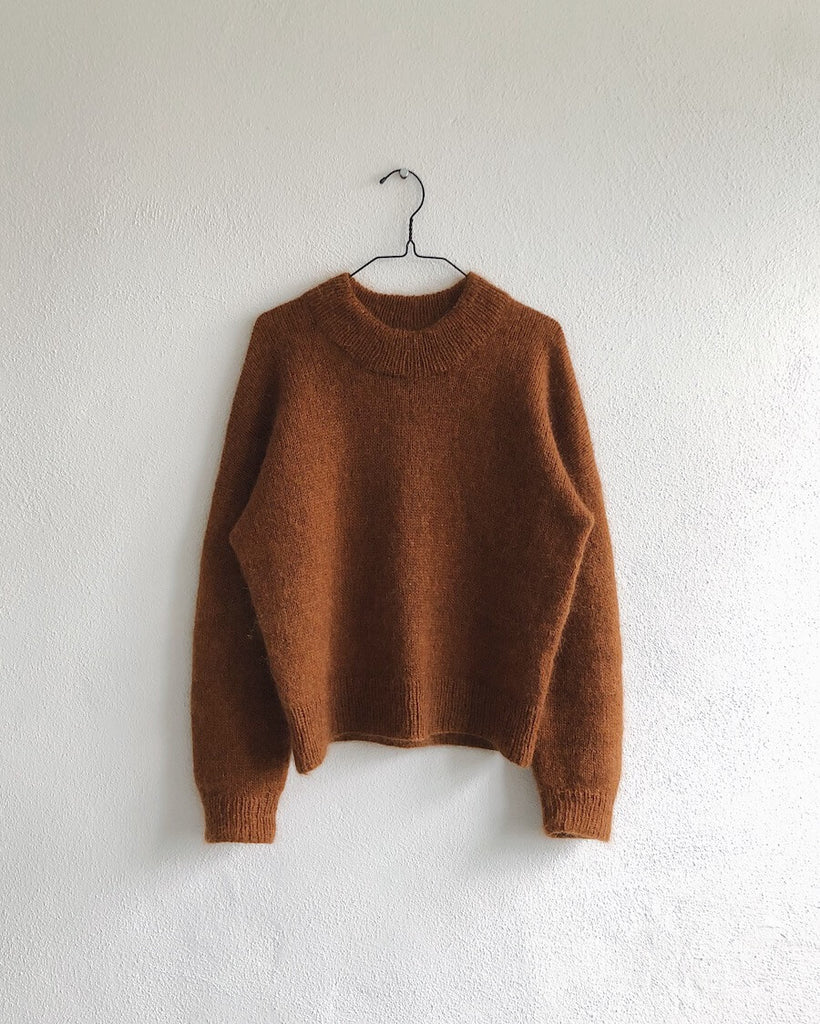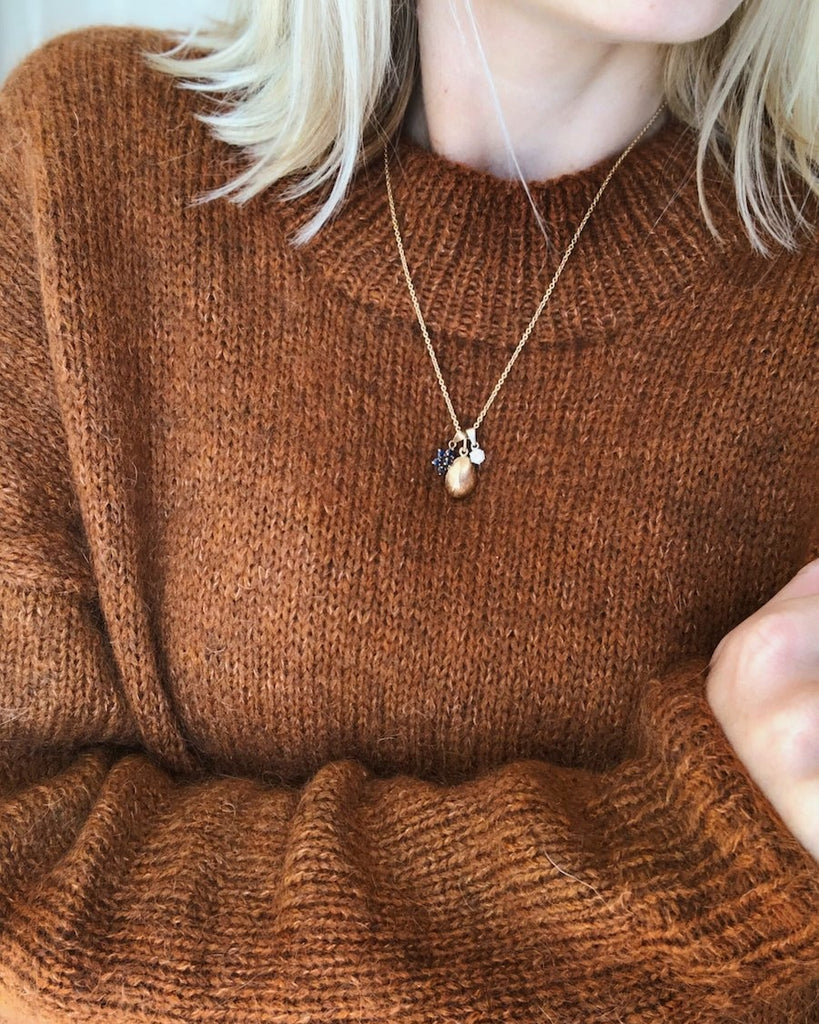Oslo Sweater
The Oslo Sweater is worked from the top down. Firstly, the back yoke is worked back and forth on a circular needle, first with increases at both ends of the needle and then straight with no increases. Then, stitches are picked up and knitted for the shoulders and these are first worked separately and then joined to form the front yoke. Back and front are joined at the bottom of the armholes to form the body, which is worked in the round on a circular needle and shaped with decreases. Sleeves and neck edge are worked from stitches which are picked up and knitted at the end.
Size guide
The Oslo Sweater is designed to have approx. 20-25 cm [8-10 inches] of positive ease, meaning it is designed to be 20-25 cm [8-10 inches] larger in circumference than your bust measurement. The sizes XS (S) M (L) XL (2XL) 3XL are designed to fit a bust circumference of 80-85 (85-90) 90-95 (95-100) 100-110 (110-120) 120-130 cm [31½-33½ (33½-35½) 35½-37½ (37½-39½) 39½-43¼ (43¼-47¼) 47¼-51¼ inches].
The measurements for the finished garment are on the front page of the pattern. Before beginning your project, measure yourself to determine which size to knit. For example, if you measure 88 cm [34¾ inches] around your bust (or around the widest part of your upper body) you should knit a size S. A size S sweater has a bust circumference of 110 cm [43¼ inches] which in the given example would give you 22 cm [8½ inches] of positive ease.
Sizes: XS (S) M (L) XL (2XL) 3XL
Bust circumference: 105 (110) 114 (120) 130 (140) 150 cm [41¼ (43¼) 45 (47¼) 51¼ (55) 59 inches]
Length: 54 (55) 58 (60) 62 (64) 66 cm [21¼ (21¾) 22¾ (23½) 24½ (25¼) 26 inches] (excl. neck edge)
Gauge: 21 sts x 30 rows = 10 x 10 cm [4 x 4 inches] in stockinette stitch on 4.5 mm [US7] needles
Needles: Circular needles: 4.5 mm [US7] / 60 and 80 or 100 cm [24 and 32 or 40 inches], 3.5 mm [US4] / 80 or 100 cm [32 or 40 inches] and 3 mm [US2½] / 40 cm [16 inches]; Double-pointed needles: 3.5 mm [US4] and 4.5 mm [US7] (unless the Magic Loop technique is used)
Materials: 125 (150) 175 (175) 200 (225) 250 g Tibet by Cewec (25 g = 190 m [208 yds]) held together with 125 (125) 125-150 (150) 175 (200) 200 g Silk Mohair by Isager Yarn (25 g = 212 m [232 yds]) or Soft Silk Mohair by Knitting for Olive (25 g = 225 m [246 yds]) or Tilia by Filcolana (25 g = 210 m [232 yds])
Difficulty: ★ ★ ★ ★ (4 out of 5)
See the classification of difficulty here.
This pattern is digital and will be sent as a pdf-file to your e-mail.
The beige Oslo Sweater is knitted in Tibet by Cewec in color 32 held together with Silk Mohair by Isager in color 6.
The reddish-brown Oslo Sweater is knitted in Tibet by Cewec in color 17 held together with Tilia by Filcolana in the color Red squirrel [352].
Video
kfb:
M1L:
M1R:
Backwards Loop Method:
Picking up stitches for shoulder:
k2tog tbl:
k2tog:
M1L on the WS:
Italian bind-off:
Quick and easy italian bind-off:
Gather masks up to sleeve:
Picking up stitches for neck edge:
Elastic thread in folded neck edge:

